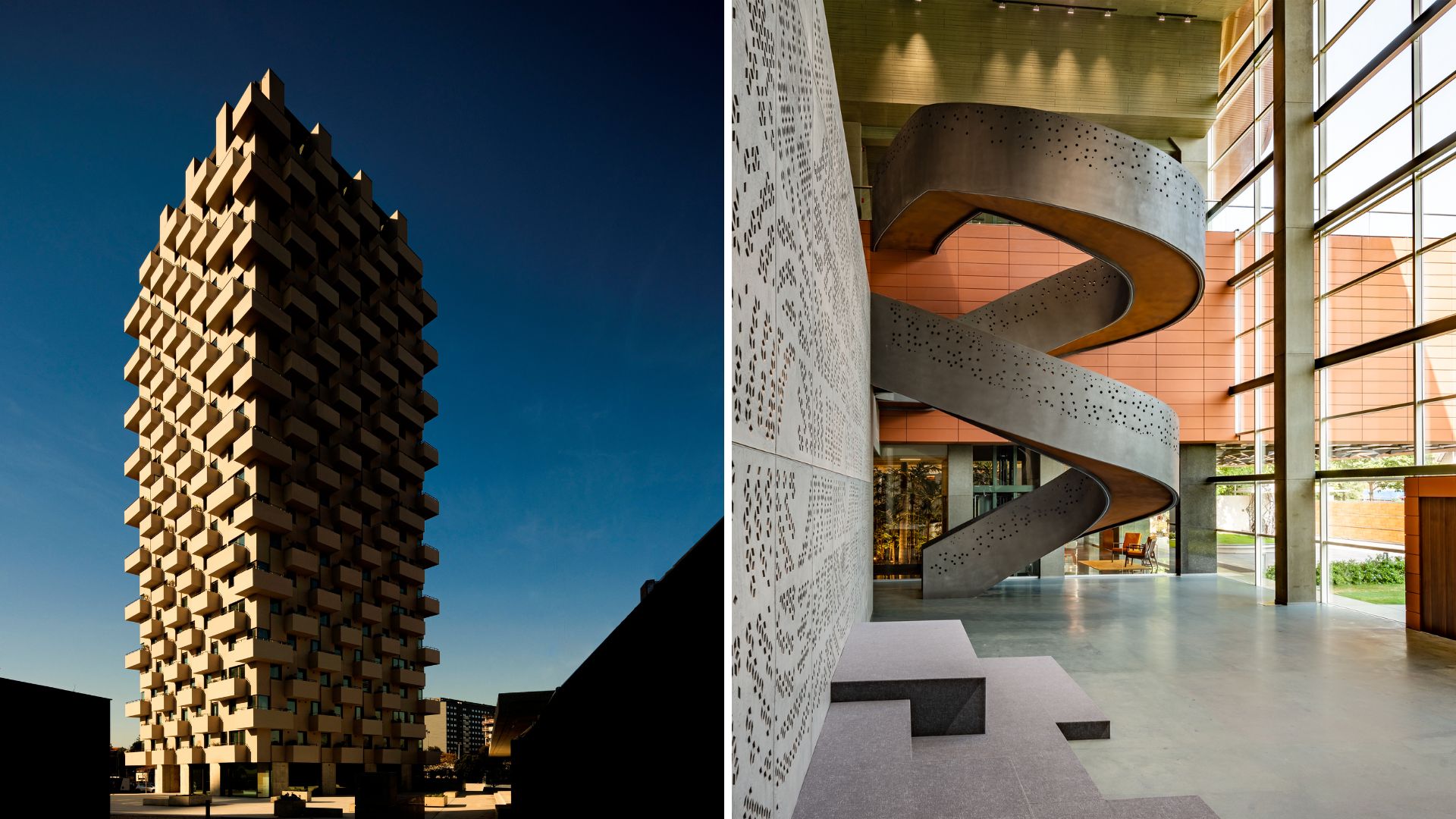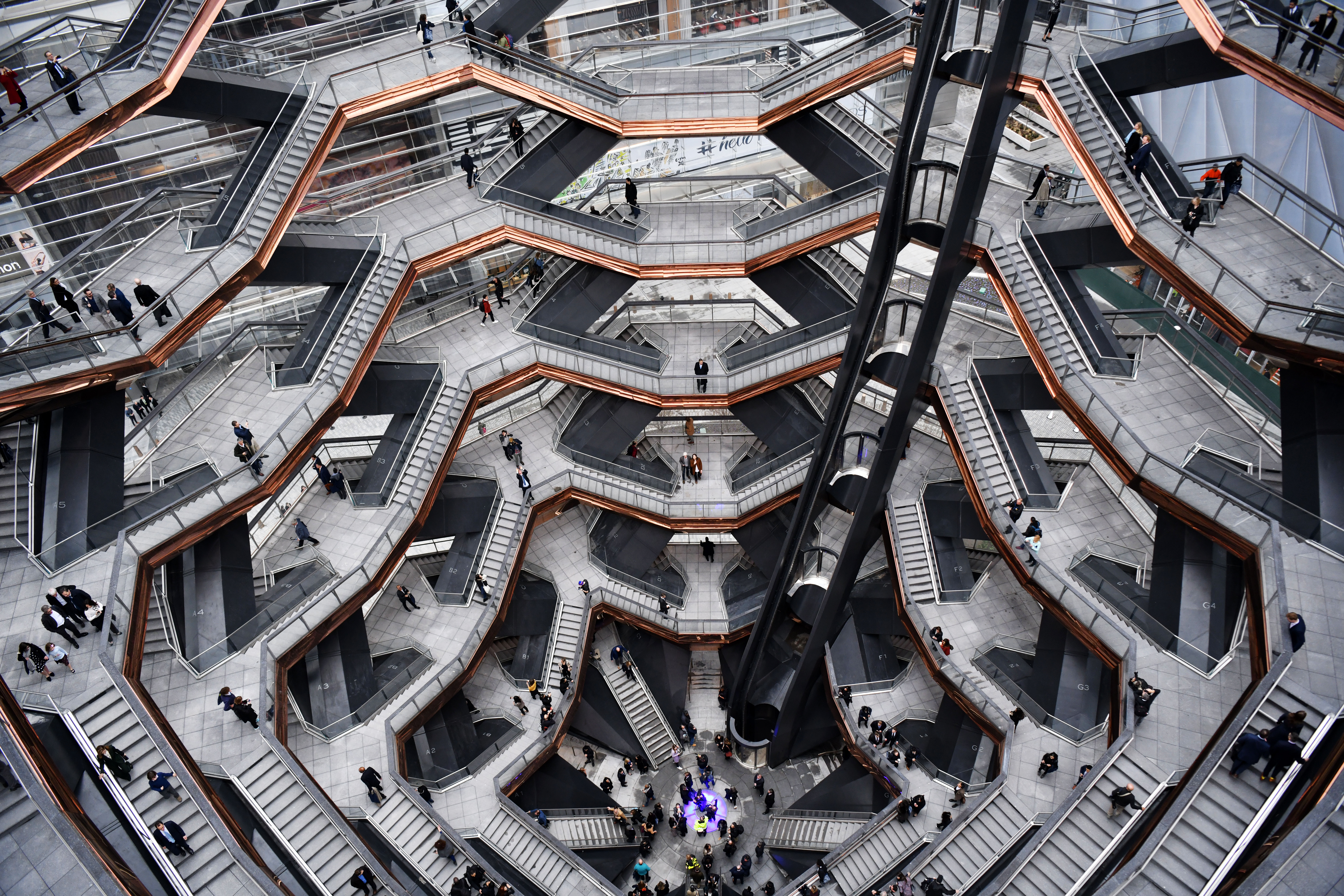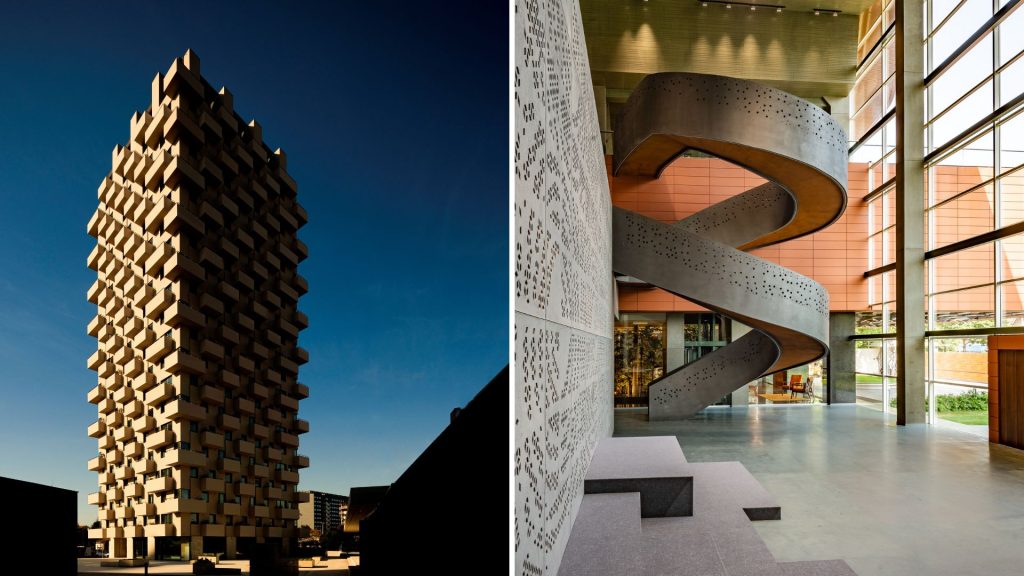Architects: Want to have your project featured? Showcase your work by uploading projects to Architizer and sign up for our inspirational newsletters.
For many social media managers and regular users alike, Instagram’s latest grid update has been a real headache (and that’s putting it mildly). Our carefully curated feeds and neatly designed templates (all built around the familiar square grid, I might add) were disrupted practically overnight.
Of course, this isn’t just about one app making a sudden design choice. It’s part of a much larger shift that’s been unfolding for years. Vertical images have quietly taken over our screens, becoming the default way we consume content. Platforms like TikTok and features like Instagram Reels and Stories have conditioned us to expect everything in portrait mode, reinforcing vertical framing as the norm.
yeah this new instagram update is insane. pic.twitter.com/ZOYr7ZmJn9
— glenda ౨ৎ (@polkadotrryy) January 18, 2025
For architecture, this shift is particularly interesting. The discipline has historically relied on wide, horizontal compositions — a format better suited to capturing buildings in their full context. But as social media reorients itself (literally), how architecture is framed and shared is shifting too.
This change isn’t just about aesthetics anymore. It’s about visibility. What gets shared, engaged with and ultimately remembered is increasingly dictated by the format of the platforms we use. And when a dominant medium favors one kind of representation over another, it inevitably shapes what we see, what we value and what we think architecture should look like.
Verticality in Architecture and Photography
Aqua Tower by Studio Gang, Chicago, Illinois | Photo by Steve Hall Hedrich Blessing
As a discipline, architecture has long embraced verticality. From Gothic cathedrals to modern skyscrapers, height has symbolized ambition, power and progress. But despite this upward trajectory, architectural photography took a different path — one that, for much of its history, favored width over height.
Early photography borrowed from painting and printmaking, both of which emphasized wide, contextual compositions. Capturing buildings in isolation was rare. Instead, photographers framed them within their environment; streets, plazas and adjacent structures were all part of the visual story. This approach extended to both exteriors and interiors, where wide-angle shots preserved a sense of scale and spatial relationships.
Even as technology evolved, horizontal framing remained dominant. Print layouts in magazines, books and exhibitions reinforced the preference for wide compositions, making vertical images less practical. Even early digital platforms, architecture blogs, forums and social media in its infancy, continued to favor these conventions.
But then came the smartphones. And they changed everything.
Social Media and the Reinvention of Architectural Imagery

LEFT: Tower 15 by OODA Architecture, Leça da Palmeira, Portugal, Photo by Fernando Guerra | FG+SG; RIGHT: OFFICE @ 63 by Sanjay Puri Architects, Navi Mumbai, India
Unlike desktops, smartphones weren’t designed to be turned sideways for casual browsing (unless, of course, watching Netflix counts). As mobile devices became the primary way people consumed content, vertical images started to take over. At first, this shift was subtle. But as platforms like Instagram, Snapchat and TikTok prioritized vertical content, the format became an expectation rather than an option.
What was once an artistic choice was now a necessity. And for architectural photographers, this shift meant rethinking how buildings were captured, framed and, ultimately, perceived.
With vertical framing now the default, architecture itself is being reframed — both literally and figuratively. Social media has dictated not only how architecture is documented but also how it is seen. Buildings designed with wide, horizontal gestures struggle to translate in a digital landscape that prioritizes tall, narrow compositions. Spaces that once relied on scale and context to communicate their presence must now fit within a narrow frame.
The Architectural Photography Dilemma: Adapting to Vertical Formats
So, does vertical framing change how architecture is understood? The answer depends on what we value in architectural photography.
For decades, wide compositions were favored because they provided context, showing not just the structure itself, but its relationship to its surroundings. They captured scale, spatial depth and the way a building functioned within a larger urban or natural environment.
Vertical framing, by contrast, compresses that narrative. It isolates rather than situates, emphasizing height at the expense of breadth.
For some buildings, this is an advantage. Skyscrapers, staircases, narrow towers and dramatic vertical interiors thrive in portrait-oriented compositions. Their scale and proportions align naturally with the format, making them more impactful in vertical photography than they might have been in traditional horizontal shots.
But for low, sprawling buildings, complex urban environments and interconnected spaces, vertical framing presents a challenge. These types of architecture were never designed to be understood in a single, narrow crop. Cropping out adjacent structures, open courtyards or pedestrian interactions flattens a building’s identity, reducing it to an isolated fragment rather than part of a larger whole.
If vertical photography is shaping how architecture is represented, what does that mean for the way we engage with it? For one, it shifts emphasis. Instead of experiencing a building as part of a larger environment, we increasingly see it as a standalone object. The relationships between structures, the way they define public space or how they integrate with the urban fabric. These are details that often get lost in a format that prioritizes height over breadth.

ESIEE-IT school of engineering and digital expertise’s by Vallet de Martinis architectes, Pontoise, France
For architectural photographers, this raises a new challenge: how do you capture a building’s full story when platforms reward a cropped, decontextualized view? Some have adapted by layering content, using vertical panning shots, stitched sequences or cinematic reels to reintroduce movement and depth. Others lean into exaggerated angles, stretching a building’s height to make it feel even more monumental.
But not all buildings can be made to fit. What happens to architecture that resists vertical framing? Does it become less visible, less shared, less valued? If spaces that perform well in a vertical format dominate the architectural discourse online, could that, over time, shape what kinds of projects get attention — and funding?
This brings us to an even bigger question: if the way we capture architecture is shifting, could that eventually influence the way we design it?
The Bigger Picture: Can Social Media Change How We Design?

Vessel by Heatherwick Studio; NEW YORK, NEW YORK – MARCH 15: A view inside the Vessel at Hudson Yards, New York’s Newest Neighborhood, Official Opening Event on March 15, 2019 in New York City. (Photo by Clint Spaulding/Getty Images for Related)
We already know that architects consider social media when designing buildings. Some projects integrate bold, photogenic elements — oversized staircases, colorful façades, immersive interior corridors — knowing that they’ll circulate online. But could verticality become part of that equation?
It’s too early to say for sure. There’s no evidence (yet) that architects are designing vertically because of social media. But the broader trend of designing for the feed is undeniable. If visibility plays a role in an architect’s success and social media is a key factor in a building’s reach, could vertical-friendly features become more common? Would architects subtly adjust proportions, stretch facades or create spaces that align better with how people photograph them?
This isn’t just a question for architects; it’s a question for how architecture is valued. If what gets seen gets remembered and what gets remembered gets prioritized, then how architecture is photographed matters more than ever.
The shift to vertical photography may not be changing how we build — yet. But it’s already changing how we see, share and engage with architecture. And in a world where perception shapes reality, that might be enough to push design in a new direction.
Architects: Want to have your project featured? Showcase your work by uploading projects to Architizer and sign up for our inspirational newsletters.

